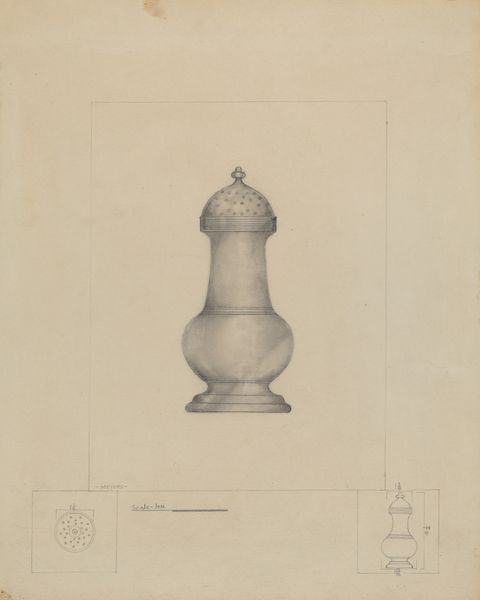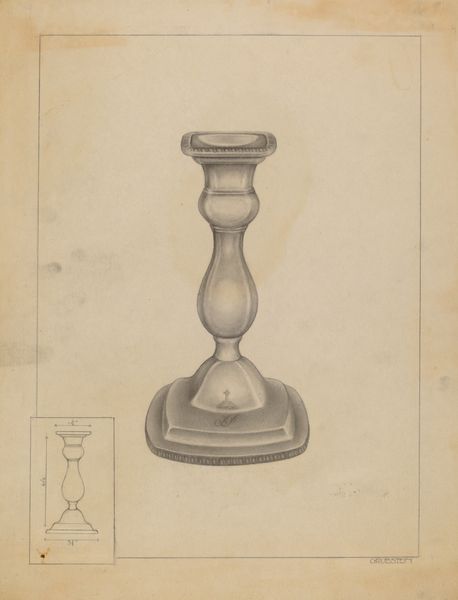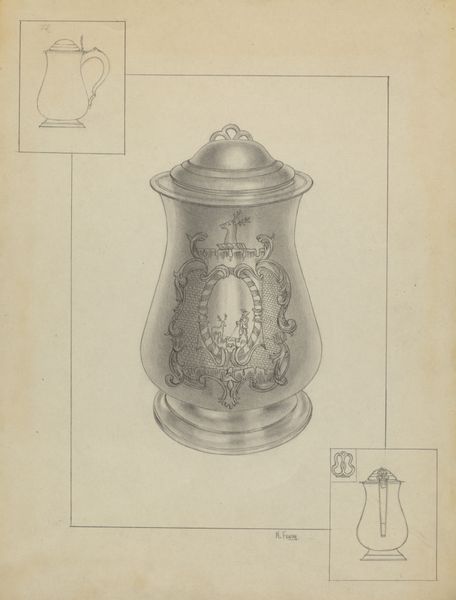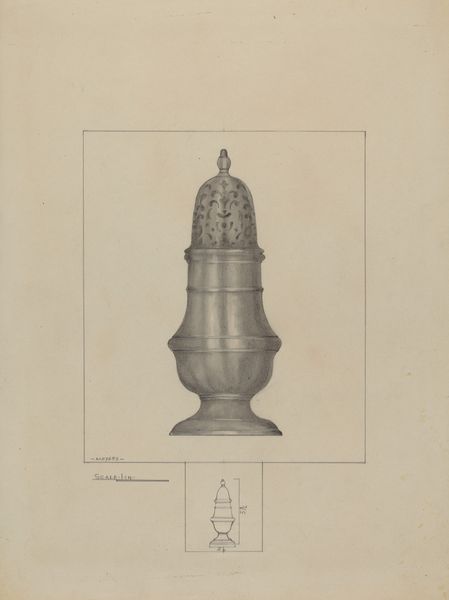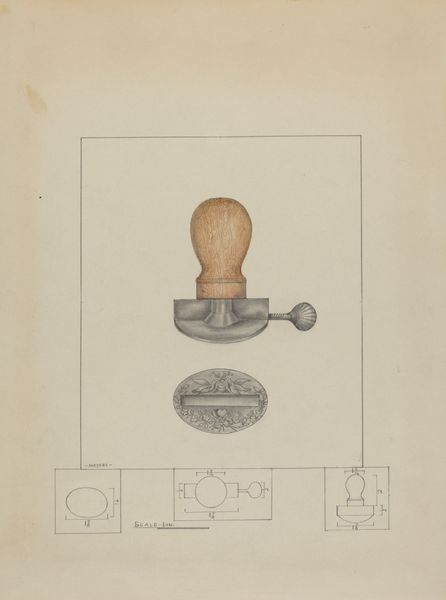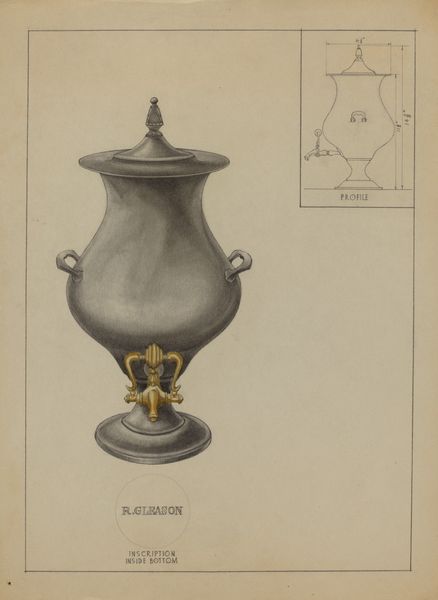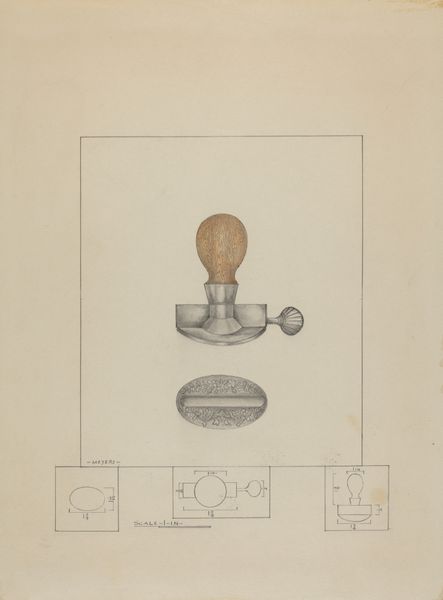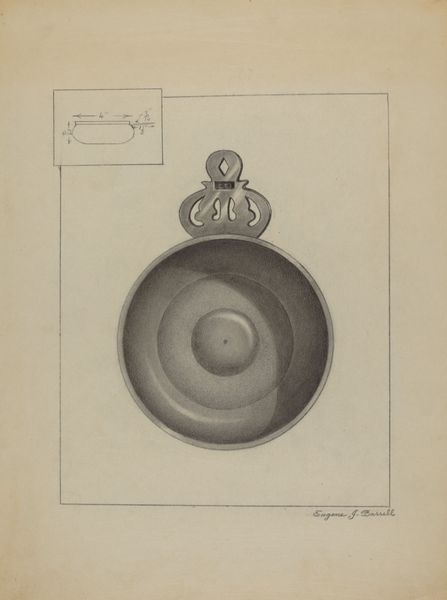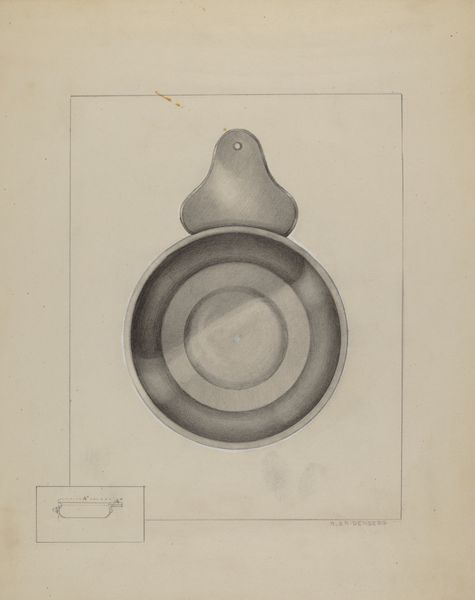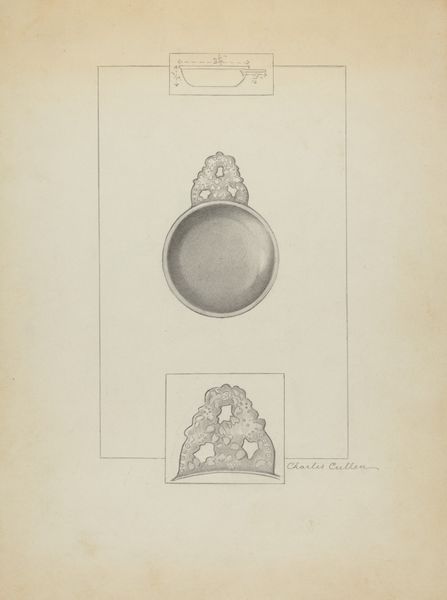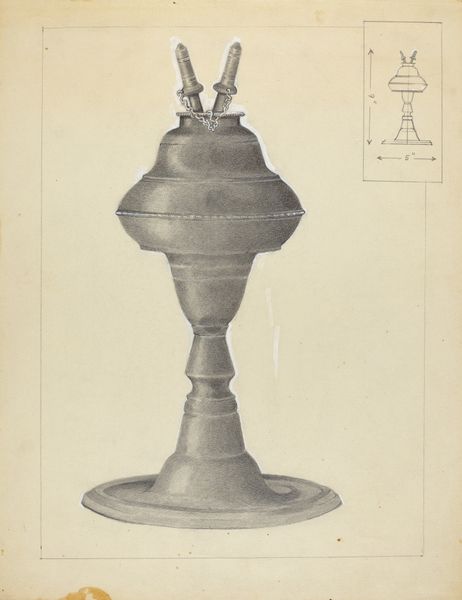
drawing, paper, pencil, graphite
#
pencil drawn
#
drawing
#
aged paper
#
toned paper
#
light pencil work
#
pencil sketch
#
paper
#
personal sketchbook
#
portrait reference
#
pencil drawing
#
geometric
#
pencil
#
graphite
#
portrait drawing
#
pencil work
#
decorative-art
Dimensions: overall: 28 x 22.9 cm (11 x 9 in.) Original IAD Object: 20" high; 9 1/2" wide
Copyright: National Gallery of Art: CC0 1.0
Editor: This is "Wall Sconce," a pencil drawing by Francis Law Durand, made sometime between 1935 and 1942. It’s interesting, almost like a technical drawing, but the shapes remind me of older sconces you see in castles or historic buildings. What jumps out at you? Curator: What I see is Durand meticulously documenting not just a light fixture, but a symbolic vessel. Note the elongated, almost teardrop shape surrounding the light itself. Doesn’t that recall reliquaries that hold sacred objects? Light, often representing enlightenment or divine presence, is literally enshrined here. Editor: So you're saying it's more than just a functional object; it carries spiritual weight? Curator: Precisely. Consider the geometric details within the light. The radiating lines, the tiered structure. They echo the visual language of mandalas, acting as miniature universes that evoke introspection. Is the light itself a stand-in for something larger, something holy perhaps? Think about how light and shadow function in places of worship. Editor: That’s a fascinating interpretation. I hadn't thought about the connection to religious symbols. So the placement, too – on a wall – could be significant? Curator: Walls delineate space, they’re boundaries. To affix this 'sacred' light to a wall transforms the space it illuminates. It’s no longer just a room, but a charged environment, imbued with whatever symbolic meaning we ascribe to that light. Is it for knowledge? Illumination? Perhaps both? The wall sconce becomes a point of focus for both everyday life and spiritual contemplation. Editor: I see what you mean. Now I am questioning its everyday usability! That changes my initial impression. I will be thinking about how this idea evolved. Thanks so much. Curator: Indeed! It prompts reflection on how we use symbolic forms every day, even unconsciously. And with these kinds of close readings, we create cultural memory and continuity for generations.
Comments
No comments
Be the first to comment and join the conversation on the ultimate creative platform.
